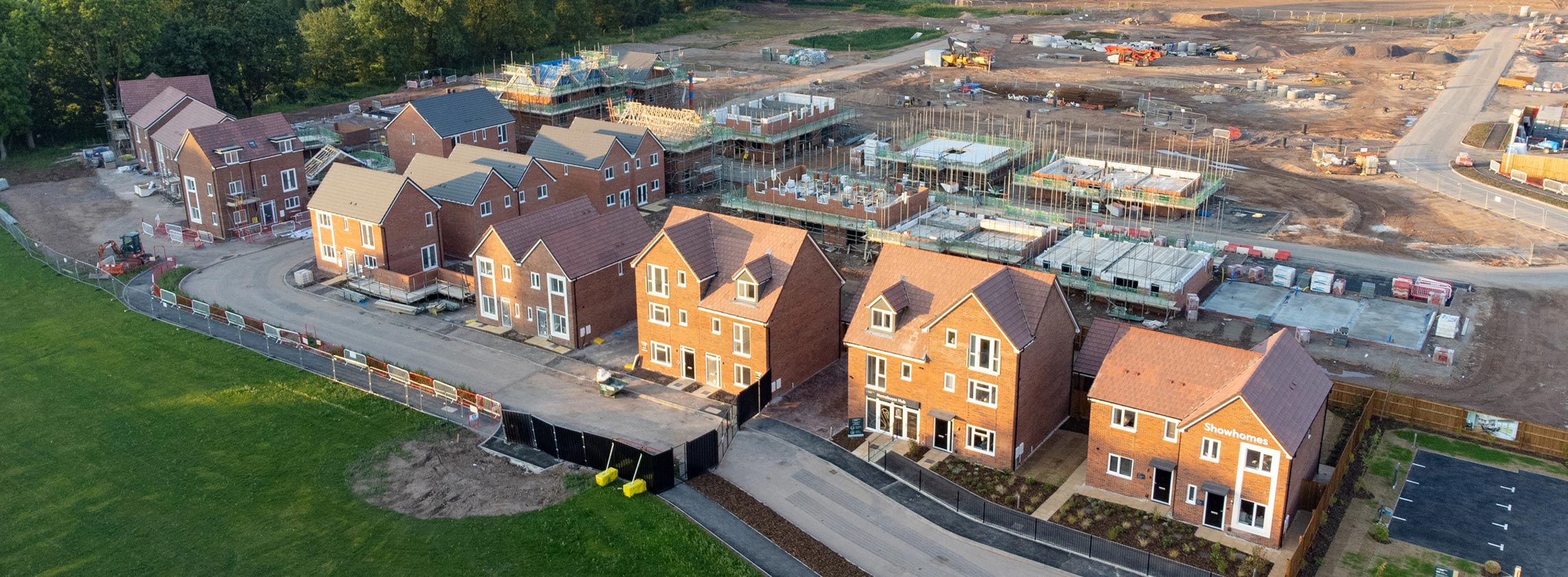Strongest growth in greenfield land in ten years
In the last quarter, UK greenfield land values grew by 3.9% and urban values by 2.2%, marking the highest quarterly growth in greenfield values since 2010. This brings annual growth to 7.1% and 5.7% for greenfield and urban sites, respectively.
High house price growth, a high number of home sales, increasing appetite for land from a range of players and an acute shortage of sites have driven upward pressure on values across all regions outside of London.
A strong housing market outpacing build costs
Despite rising build costs, high house price growth has supported land price growth. House prices grew by 10% in the year to September 2021 in the UK, according to Nationwide.
All home sales have reached 26% above 2019 levels in the 12 months to August 2021, according to HMRC, with sales remaining robust post the end of the stamp duty holiday. New homes have been selling well too, with high forward sales and reservation rates, supported by Help to Buy, albeit restricted by the number of homes available.
Build costs have increased by 2.7% in the year to September 2021 according to BCIS, although its forecasts for the next year have been revised up to 6.9%. However, beyond the headline figures, key materials have increased significantly, with imported plywood and fabricated structural steel increasing by 78.4% and 74.8% respectively in the year to August, according to BEIS.
Everyone in search of sites
Competition for development land has continued to increase significantly over the summer. A net balance of 89% of Savills development agents reported increasing bid levels in Q3 2021 compared to normal levels. As a result of the high level of competition for sites, in many markets, bid values have exceeded guide prices significantly.
The Build to Rent construction pipeline increased by 22% in the regions in the year to Q3 2021
Lucy Greenwood, Director, Residential Research
All types of parties are actively seeking sites. Major housebuilders are using their cash-rich positions to be particularly competitive. Registered providers are using grants to support their land buying. And the Build to Rent sector is increasingly active in the regional towns and cities with strong fundamentals as well as suburban sites – the Build to Rent construction pipeline increased by 22% in the regions in the year to Q3 2021.
Many developers are looking beyond their normal site size and location to secure sites. This ranges from major housebuilders looking to purchase larger sites through to considering much smaller sites than they normally would (below 50 units in some cases) as well as those in more secondary locations. As a result, all types of sites are sought after.
Shortage of all sizes of sites
To compound the challenges in the land market, there are fewer sites available. Fewer consents, slow planning decision-making, local plan reviews and stalled sites due to nutrient neutrality are all contributing to the shortage of sites. The number of consents fell by -13% in the year to Q2 2021.
In addition, 23% fewer planning decisions were made by the Planning Inspectorate in the year to August 2021 versus the previous year, and it is taking an average of 23.9 weeks for decisions to be made. High levels of nitrates and phosphates found in rivers are preventing new development from taking place in the affected areas, predominantly in the south, such as the Solent, further heightening the shortfall of supply.
Contrasting land market in London
London has experienced more downward pressure on land values than the regions due to relatively weaker house price growth being insufficient to offset build cost inflation and expectations of lower affordable housing revenues. Over the six months to September 2021, Central and Outer London residential land values changed by 0.1% and -0.9%, bringing annual falls to -0.4% and -1.6%, respectively.
The number of land sales in the capital has remained relatively low over this period. However, the market remains active with significant interest for all sites. Like the rest of the country, there is a shortage of sites to sell. But in some cases, landowners that aren’t under pressure to sell are holding out for higher values.
Market activity over the period has been driven by market for sale developers, with a notable return in interest and offers from volume developers, including housebuilders. Whilst there remains material interest from the alternative residential sectors, such as senior living, build to rent and co-living, this interest has not translated to a material number of land acquisitions from them.
The land market for offices in London is more positive than for homes – office development land values in Central and Outer London increased by 6.2% and 1.9% over the last six months. Demand for office development opportunities has intensified as a result of yield compression, improving occupier confidence and a lack of available sites in the development pipeline.
Outlook
The competition for sites is likely to sustain regional land value growth in the short term whilst there is a shortage of sites and high demand. However, there is the risk that build costs inflation starts to outpace house price growth. The end of Help to Buy in 2023 has the potential to reduce sales demand. These could both put downward pressure on land values in the medium term. In the longer term, increased build costs required to meet the net zero agenda and environmental mitigation is likely to suppress land value growth.
